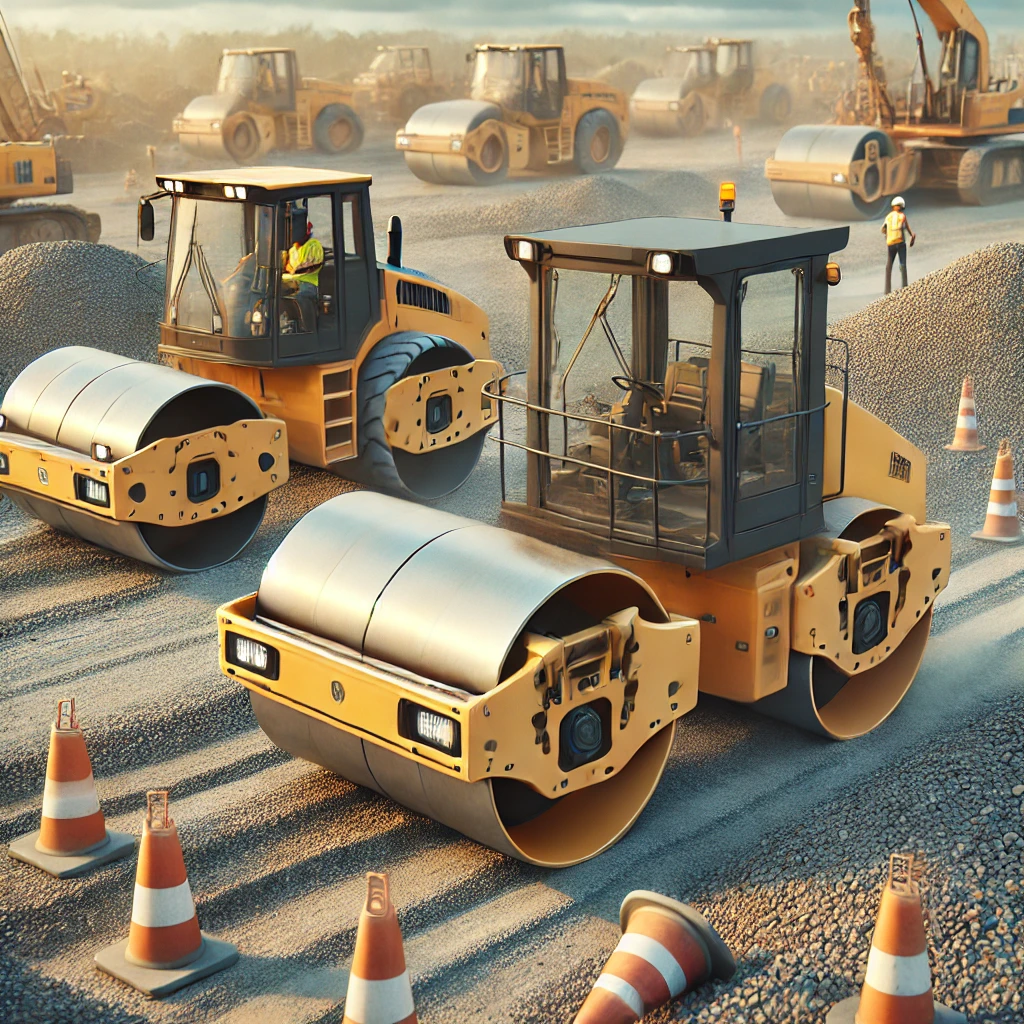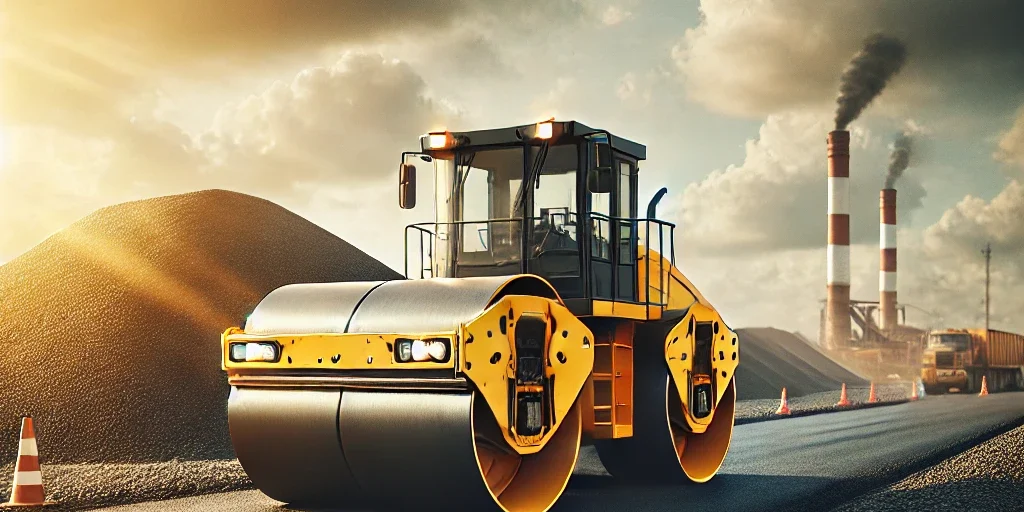The construction of roads is one of the operations that requires the use of specific machinery. It is no coincidence that road construction often relies on renting machines and equipment. One such device is the roller, and this article focuses specifically on this machine. We aim to understand how a roller works and what its applications are.
What is the purpose of a roller?
A compaction roller or road roller, is a machine used to compact loose materials, particularly the freshly applied bitumen layer on the road surface. Every type of these machines is self-propelled, meaning the operator controls it from onboard the machine. This feature distinguishes road rollers from agricultural rollers, which are towed devices. The structure of the roller consists of a machine body that moves on one, two, or three drums. A drum is a metal cylinder through which the roller compacts the ground. The weight of the drum, combined with the weight of the machine itself, causes the compression of loose materials.
Types of rollers
Looking at the drums, we can define two types of rollers:
Single-drum roller: Characterized by having one drum.
Tandem roller: Equipped with two drums.
Additionally, there is a distinction between static and vibrating ones. Unlike static rollers, the vibrating ones feature drums that can vibrate, maximizing compaction efficiency. It is important to note that operating a machine with an operating weight exceeding 3.5 tons requires a Class C driver’s license.
Large rollers
There are two types of rollers available on the market for road construction, both of which can be rented:
Road compaction rollers: These can have two or more large drums. Their significant operating weight enables them to compact materials with varying consistencies. Road compaction rollers are used to compact the lower layers of roads, such as soil and gravel, as well as to ensure uniform compaction of asphalt—the road surface driven on by vehicles.
Compact rollers: These are smaller versions compared to road rollers but serve the same purpose. Compact self-propelled machines are used to compact smaller areas such as minor roads, parking lots, and asphalt repairs after roadworks. The width of a compact roller is just one meter, making it ideal for compacting bike paths and sidewalks where smaller machinery is required.

Renting a roller
Hiring is the best solution for using professional machinery, whether it’s a large road roller or a compact one. Renting a 1.5-ton roller with a drum width of 900 mm costs approximately €105 per day. While larger models have rental fees starting at around €200 per day. As with all other machinery rentals, fees decrease when the rental duration increases.
Our conclusions
This road compaction machine is available on the market in various models and sizes. Although their purpose remains the same, it is always essential to choose the most suitable roller for the task at hand.
If you’re having trouble selecting the perfect roller for your project, contact us now!






